In this unguarded moment, Sutton was telling us about much more than golf. To anyone wondering why, in Daniel Andrews’ Victoria, there is a greater reluctance to lift restrictions on school attendances and social movement than in every other mainland state, the whiff of paternalism is hard to miss. Despite a demonstrated willingness to comply with social distancing measures, we are still being protected from our lesser selves.
And it really is Andrews’ Victoria. If you doubt this, just listen to those who have done the top job. Steve Bracks, a revered Labor figure who never lost an election, describes Andrews as the nation’s pre-eminent political leader and one of the state’s best premiers. “It is almost as if he was made for this,’’ he says.
Jeff Kennett, renowned for bulldozing ideas through noisy opposition, says Andrews is singularly focused: “He hasn’t given into the bayings of interest groups along the way.”
John Brumby led Victoria through the Black Saturday bushfire disaster and says Andrews’ crisis management is textbook. “Rule number one is you have got to share information with people you need to be open and transparent, get rid of the politics and be straight about what we need to know and what we need to do to get through this together. Daniel has done everything right and you are seeing that in the response from the Victorian people.’’
Even some of Andrews’ fiercest critics concede that right now, there is no better communicator in Australian politics. His withering response to the sandbelt revolt by frustrated golfers is a case in point.
“Playing golf is not worth someone’s life,’’ declared Andrews, himself a passionate golfer.
This echoed the language Andrews adopted the morning after national cabinet agreed stage one restrictions were needed to suppress the virus. “If people simply behave as normal, if they don’t take this thing seriously, if they act selfishly, then people will die. I can’t put it any clearer.’’
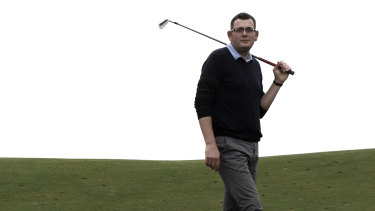
Daniel Andrews says 'playing golf is not worth someone’s life'.Credit:Julian Kingma
Few politicians can. Throughout the COVID crisis, Andrews has shown a rare ability to distill complex issues into a simple, relatable message. Yet, as effective as this is, his tendency to absolutism - you either agree with me or are indifferent to human life - betrays something else about his leadership.
Despite sharing national cabinet with Prime Minister Scott Morrison and the leaders of every other state and territory government, despite receiving the same unanimous public health advice of the Australian Health Protection Principal Committee, Andrews is convinced that in all areas of policy conflict, his approach is right.
When Daniel Andrews believes he is right - as he does about the need to keep students and teachers away from school until a greater volume of testing is done and Victoria’s state of emergency expires on May 11 - it is very difficult for anyone to change his mind.
Kennett says it is a trait that pre-dates the pandemic: “He is not a man who turns easy on any issue.’’
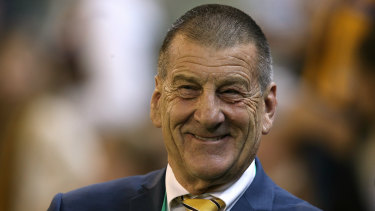
Not for turning: former premier Jeff Kennett.Credit:Wayne Ludbey
Opposition leader Michael O’Brien says we are seeing this “writ large” in the Premier’s response to the COVID crisis. “Daniel Andrews has never been one to handle criticism or alternative views well,’’ he says. “People inside the Labor Party would say that about him and I think people who have dealt with him in public life would say the same thing.”
Andrews’ convictions have served him well. Bracks mentored Andrews in the lead-up to his 2014 election win. He says it was a victory few inside the Labor Party thought possible.
“He was convinced more than anyone else that Labor had a chance of coming back within one term, which is very unusual in Victorian history,’’ Bracks says. “That is part of what is Daniel Andrews. We have seen that in successive issues he has had to deal with in government and this one, the biggest of all.’’
Brumby made Andrews his minister for health. One of the issues he confronted was the H1N1 pandemic, which in Australia infected more than 34,000 people and killed 191 - twice the number of deaths recorded so far from COVID-19.
Brumby says Andrews was fascinated by public health and developed a deep understanding of the health system. Since then, Andrews has led the Labor Party for 10 years, governed as Premier for six and last summer fronted the state’s protracted bushfire crisis.
“You would have to go a long way to find anybody in government that has as good a set of skills and experience to deal with this issue as Daniel,’’ Brumby says. “In turn, that has meant he has had a pretty clear view about what we need to do to tackle this issue.”
Yet now that Victoria has arrived at a dramatically different place than anyone anticipated in the early weeks of the pandemic, is the strength of Andrews’ conviction an obstacle to a commensurate change in policy?
At the start of this pandemic, epidemiological modelling prepared for the Victorian government predicted that, in the absence of strict social distancing and other measures since enacted, as many as 36,000 people could die.
Brumby, the chairman of the Melbourne Convention and Exhibition Trust, reveals it was only two weeks ago that the Victorian government formally shelved a plan to take over the cavernous Melbourne Convention and Exhibition Centre on the edge of the CBD and turn it into a 1000-bed intensive care hospital and temporary morgue. “It was just about a done deal,’’ he says. “We had builders measuring everything up.”
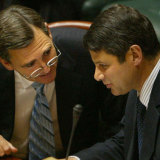
Former Victorian premiers Steve Bracks and John Brumby in parliament.Credit:Paul Harris
Instead, there were on Friday a total of 53 active cases of coronavirus in Victoria. The state’s most senior legal adviser, Solicitor-General Kristen Walker QC, this week told the Supreme Court, in opposing an application for a prisoner to be released from jail because of the risk of COVID-19, that on any given day any Victorian stood between a one in 200,000 and one in 500,000 chance of infection.
Do these odds justify preventing Victorian students and teachers from returning to class, as they did this week in South Australia, have done in Western Australia and will start to do in NSW from May 11? Do they support some easing of social distancing, as we are seeing in Queensland and most dramatically in South Australia, where the state hasn’t recorded a COVID case for more than a week and Premier Steve Marshall is signalling the end of lockdown?
Andrews has indicated that come May 11, things will reviewed. Within senior levels of Victoria’s education bureaucracy, there are growing expectations that kids may return to class in early June. Yet for now Andrews is not budging.
Victoria’s reticence to shift from its provisional, term three return-to-school date was part of the reason for Federal Education Minister Dan Tehan’s intervention this week in which he offered to bring forward funding already promised to independent and Catholic schools if they agreed to be back in class by the start of June.
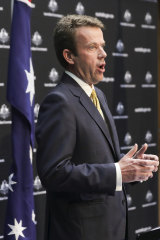
Federal Education Minister Dan Tehan and Prime Minister Scott Morrison say it is safe for all students to return to class.Credit:Alex Ellinghausen
In Victoria, the aim of the intervention was two-fold; to entice independent schools to return to class and to put pressure on the state system to follow suit. In WA, South Australia and the Northern Territory, it served a different purpose; to encourage independent schools to join state schools already back to class and alleviate teachers’ union pressure on Marshall and his WA counterpart Mark McGowan.
Independent schools had been asking since early March for funding to be brought forward to ease the cash flow problems of schools where out-of-work parents could no longer afford to pay fees. Independent Schools Victoria chief executive Michelle Green says that about 30 Victorian schools were identified as being at risk of financial collapse without a funding advance or access to a government-secured loan.
Tehan tells The Age that for educational, social and economic reasons, class should be in for every student in every state. “We have always been convinced because that has been the advice given to us by the AHPPC right throughout this pandemic; that it is safe for children to be at school and for our teachers to be at school with the right protocols in place.”
His message to Andrews is to look at South Australia, WA and the NT, where they have suppressed the rate of infection while keeping their schools open.
The Andrews position, based on Sutton’s advice, is that the reopening of schools runs contrary to the broader public health imperative to keep people at home and, if done too early, would increase the risk of another spike in coronavirus cases.
Andrews insists the science is not settled on whether children transmit the virus and even if it was, he doesn’t see how sanctioning the daily mass movement of people to get kids to and from school is consistent with the broader public health message to stay at home.
He wants to see the results of a further 100,000 coronavirus tests to better determine what the rate of community infection is before declaring it safe to go back to school. Until then, Sutton’s advice is that students who can learn from home should. This makes it difficult for any school to do otherwise.
O’Brien says it has never been explained why Sutton’s advice on schools to the Andrews government appears at odds with the advice of Commonwealth Chief Medical Officer Brendan Murphy and every other member of the AHPPC. Put another way: Why is Victoria the doomsday state?
While Victoria remains an outlier, it is difficult for any school to contemplate a return to class. As Jeremy Stowe-Lindner, the principal of Bialik College in Hawthorn, tells The Age: “I am a history and philosophy teacher. I am not one to override the advice of my state’s chief health officer. That would be an enormous leap of faith and an enormous act of arrogance.”
Daniel Andrews’ Victoria has taken its own leap of faith, perhaps without even realising it.
On April 23, the Victorian Parliament was recalled from its pandemic recess for a day. In a matter of hours - with no amendments, limited debate and no time for public consultation - both houses passed three substantial pieces of legislation.
The first provided the government with supply. The second provided access to $24.5 billion in new borrowings, putting the government on a path to more than triple state debt from the $21.8 billion inherited by Andrews to $73.8 billion by the end of the next financial year. The third invests a level of power in Andrews, his ministers and senior government bureaucrats never previously contemplated.
The most profound measure within the COVID-19 Omnibus Bill, a set of interim, emergency measures enacted with a six-month sunset clause, is the power given to the “Governor in council”, a meeting of as few as two ministers chaired by Victorian Governor Linda Dessau, to issue regulations which override statute and in some cases constitutional provisions over a wide range of policy areas including tenancy arrangements, the courts and jails.
Andrews described it as a “Bill like no other” which would “enable us to help slow the spread and save lives". O’Brien, an MP for 14 years and former state treasurer, agrees it is “like nothing I have seen before” - and has grave misgivings about it.
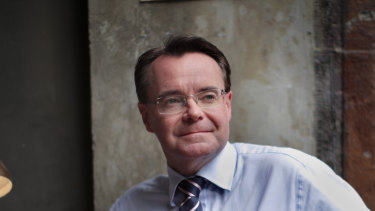
Opposition Leader Michael O'Brien says he has grave misgivings about the extra powers given to government ministers.Credit:Simon Schluter
“I have never seen a minister with a regulation power that can override the constitution,’’ he says. “That is what this Bill does. It gives ministers extraordinary power that normally is only given to the parliament acting as a whole.’’
O’Brien, like Kennett, is also deeply concerned about the record debt Victoria is taking on. Kennett points out that additional borrowings is roughly the same amount of debt he took seven years to pay down when his government took over Victoria’s financially stricken books from John Cain and Joan Kirner’s governments.
O’Brien says the size of the debt is a “huge problem’’ and it remains unclear what the government intends to spend the money on. “If we just see budget black holes being filled and paying recurrent expenses like public service wages out of borrowed money, that is the road to economic ruin,’’ he says.
Victorian Treasurer Tim Pallas says it is too early to say what the economic impacts of the coronavirus will be and what the pandemic means for state tax revenue and future GST receipts.
“Clearly there will be a hit to revenue,’’ he says. “We know that property prices are set to decline, the unemployment rate is rising and we’re seeing a decline in general consumption in many sectors of the economy, which has a detrimental impact on GST.’’
Victoria also faces a double whammy to two of its largest export industries, tourism and education.
Treasury Corporation of Victoria managing director Bill Whitford, who will issue AAA-rated Domestic Benchmark Bonds to raise the additional debt, says that when you consider Victoria’s debt-to-GDP ratio, it is in a “very advantageous position’’ compared to the Commonwealth and other countries.
“The things that are keeping me awake at the moment certainly aren’t my ability to access the debt markets as the Treasury requires,’’ he says.
Whitford agrees, however, that it is not yet apparent what the government plans to do with the money.
Throughout the pandemic, decision-making within the Andrews government has been concentrated in the hands of the Premier and seven hand-picked ministers who make up the Crisis Committee of Cabinet. The CCC, which Andrews chairs, divvies up responsibility for all COVID policy matters to the government’s most experienced ministers. It usually meetings twice a week through video conferences and has relegated the rest of Cabinet, which still meets weekly, to a secondary role.
This concentration of power is intended to streamline the process of government and enable decisions to be made more quickly. It was last used during the Black Saturday bushfires, when Brumby was premier and Andrews was responsible for co-ordinating the health response.
“You need to make a whole lot of big decisions and you need to make them in a timely way,’’ Brumby says. “The normal cabinet processes don’t give you that flexibility and agility. Some people feel a bit left out but it is just the way it has got to be.”
O’Brien warns that, with the abandonment of parliament until June 2, the government’s refusal to establish an independent oversight mechanism means the Andrews government is not being subjected to the scrutiny Victoria needs. “The Premier has effectively suspended parliament and he has sidelined the Cabinet. Does it make for quick decision-making? I am sure it does. Does it make for good decision-making? I have got my doubts.”
Brumby says that other matters will be weighing on Andrews’ mind.
In the 11 years since Black Saturday, when 173 people died, Brumby has often gone back over the decisions he made and warnings he issued in the days leading up to those fires.
“You think, if you had your chance again, would you do things differently? I think we did everything we could and everything we knew at the time but of course, you regret that terrible loss of life.
“Here Daniel is, front and centre, and the difference between 50 deaths or 5000 deaths or 50,000 deaths, which is what the modelling was showing, is profound. That is what he will be feeling. So he will put up with a bit of criticism about keeping schools closed. That is what leaders do.”
Chip Le Grand is The Age’s chief reporter. He writes about crime, sport and national affairs, with a particular focus on Melbourne.
Most Viewed in National
Loading
https://news.google.com/__i/rss/rd/articles/CBMiZ2h0dHBzOi8vd3d3LnRoZWFnZS5jb20uYXUvbmF0aW9uYWwvdmljdG9yaWEvd2VsY29tZS10by12aWN0b3JpYS10aGUtZG9vbXNkYXktc3RhdGUtMjAyMDA1MDEtcDU0cDQ5Lmh0bWzSAWdodHRwczovL2FtcC50aGVhZ2UuY29tLmF1L25hdGlvbmFsL3ZpY3RvcmlhL3dlbGNvbWUtdG8tdmljdG9yaWEtdGhlLWRvb21zZGF5LXN0YXRlLTIwMjAwNTAxLXA1NHA0OS5odG1s?oc=5
2020-05-01 14:07:59Z
52780757903125
Tidak ada komentar:
Posting Komentar